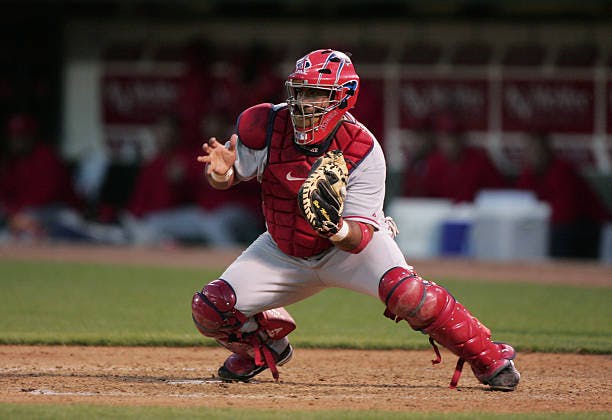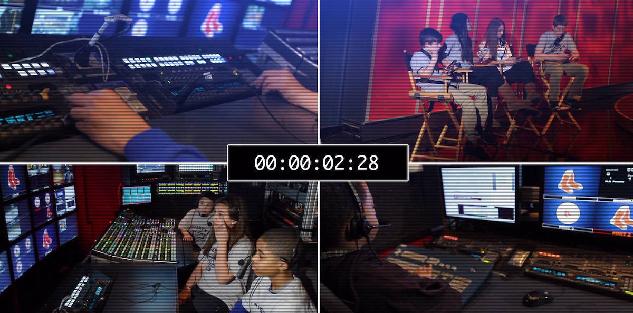Featured courses
- Understanding The Shift by Brandon Ogle
- Two Drills to Improve Outfield Movement and Communication by Grant Young
- The Ultimate Resource For Coaching Youth Baseball by Jackson Chlebowy
- Become a Master at Bunting by Brandon Ogle
- 5 Reasons Why There Is More To Good Base Running Than Just Speed by Brandon Ogle
- Three Injury-Prevention Tips For Your Offseason Pitching Program by Grant Young
- How to Teach Hitting to the Next Generation by Grant Young
- Developing Defensive-Minded Baseball Catchers by Grant Young
- 3 Baserunning Tips to Score More Runs in Baseball by Grant Young
- 5 Outfield Drills to Work on in Season by Alec Burris
- Keys For Scoring More With Runners on First and Third Base by Grant Young
- How to Develop Your Game to Become a Five-Tool Player by Brandon Ogle
- 3 Coaches Share the Keys to Running Baseball Practice the Right Way by Grant Young
- Four Drills to Sharpen a Baseball Hitter’s Vision at the Plate by Grant Young
- Four Quotes to Hit Better With Two-Strikes by Grant Young
- Four of Former MLB Pitcher Juan Nieves’ Movement-Based Pitching Drills by Grant Young
- Two Tips For Developing an Elite Baseball Bullpen by Grant Young
- Overcoming the Four Challenges of Indoor Baseball Practices Because of Weather by Grant Young
- Three Tips to Make Your Baseball Team Mentally Tougher by Grant Young
- Three Priceless Philosophies to Motivate Your Baseball Team by Grant Young
- Three Offseason Baseball Drills to Simulate Competition by Grant Young
- Three Baseball Offseason Strength and Conditioning Essentials by Grant Young
- Important Ways to Improve Your Baseball Team’s Baserunning by Grant Young
- Three Ways to Perfect Hitting Mechanics From an MLB Icon by Grant Young
- Catchers can influence pitchers...for bad or good by Drew Johnson
- Throwing Strikes and Playing Good Defense Equals Wins by Jose Ortiz
- Legendary Indiana Head Baseball Coach Bob Morgan’s Offensive Theory by Grant Young
- Tennessee Head Baseball Coach Tony Vitello on How to Practice Baserunning by Grant Young
- Three Great T-Ball Drills For Youth Baseball Players by Grant Young
- How to Manage a Baseball Pitching Staff by Grant Young
- Three Uncommon Tips to Become a Better Hitter by Grant Young
- How a Baseball Coach Can Develop Strike Throwers by Grant Young
- Drills to Develop Elite Baseball Outfielders by Grant Young
- Baseball Training Exercises to Strengthen Arm and Bat Speed by Grant Young
- How to Use Bunting to Score More Runs by Grant Young
- How To Build An Elite Baseball Infielder by Grant Young
- Three Drills to Improve Your Baseball Team's Infield Play by Grant Young
- Three Keys to Curating a Pitching Staff’s Success by Grant Young
- 3 Techniques to Develop a Baseball Player’s Hitting Approach by Grant Young
- How to Cultivate Confidence Within Your Pitchers by Grant Young
- 5 Every Day Drills To Help You Become A Better Catcher by tyler Linderman
- How to Throw A Curveball by Brandon Ogle
- How to Assemble a Lock-Down Bullpen by Brandon Ogle
- How to Throw a Sinker by Brandon Ogle
- How to be a Smart Baserunner by Brandon Ogle
- Improving a player's slugging average by Phillip Woolgar
- The 8 Fundamentals of Pitching by Drew Johnson
- How to Throw a Deceiving Changeup by Brandon Ogle
- Step Up Your Outfield Defense With These Three Drills by Jose Ortiz
- 8 Baseball Drills Every Player Should Practice by Drew Johnson
- How To Become An Elite Defensive Outfielder by Tyler Linderman
- 5 Tips For Crushing A Curveball by Johnny Grassi
- LEGENDS FOR YOUTH INCLUSION BASEBALL CLINIC by Phil
- Fourteen Ways To Turn A .300 Hitter Into A .210 Hitter by Jay P. Granat, Ph.D.
- How To Become The Ideal Leadoff Man by Brandon Ogle

5 Every Day Drills To Help You Become A Better Catcher
Catching is one of the most physically taxing positions in baseball. Spending 9 innings in a squat can be tiring, but it is also incredibly important. You must always be posed, aware of your surroundings and ready to jump into action every pitch. In this article I will talk about 5 drills that take a total of about 20 minutes that you should practice every day that will help you develop habits of extremely good catchers.
#1 Slide and Blocklock
Every passed ball or wild pitch leads to a free base for the opposing team. As a catcher, the number one responsibility you have is to keep the ball in front of you. The slide and block drill can be done with a fellow catcher or coach every day and takes just a few minutes.
The drill is simple in that as the catcher, set up in your receiving position and have another person throw a ball in the dirt and to one of your sides. Use your body and slide to get in front of the ball and play it off your chest protector. Remember; always keep the ball in front of you.
Some keys to focus on in this drill:
Start in a good receiving position. Keep your posture solid so that the feel becomes natural in a game.
Don’t reach or stab at the ball with your glove. You’ll miss more than you catch
Slide on your leg protectors to the ball and get as much of your body in front of the ball as possible.
At all costs, keep the ball in front of you
Here’s a good example of a catcher sliding to block a ball.
#2 Field and Throwhrow
Fielding your position as a catcher is more than just catching pitches and throwing out would be base stealers. One of the hardest plays to make in baseball is when a catcher has to get their crouch, field a dribbler in front of the plate and make a throw to a base.
This drill can be done as part of team infield drills. As always, start the drill in a good catching position. Have a coach or teammate toss a ball out in front of the plate. You should jump out of your crouch, field the ball cleanly with you’re throwing hand and make a quick, accurate throw to each base.
For 1st and 3rd base, practice making throws on both the inside and outside of the bag, verbally letting your teammate know which side of the bag you are throwing on.
This is a skill that takes practice. You come across this situation most often in bunts which means 1 of 2 things:
It is a sacrifice situation in which the other team is giving you an out. Take it! Take your time, field the ball and make a good throw and take the free out.
It’s a bunt for hit in which the runner is fast. You need to be quick here and make a good, strong, accurate throw.
#3 Popups Behind Home Platelate
Fielding a popup behind home plate may be the hardest pop up to catch in the infield. There are so many variables to account for: get rid of the mask, locate the ball, locate the dugout or wall, read the ball flight correctly. This play may only happen once every few games, but it could end up being a big out.
As usual, begin the drill in your normal catching position. I encourage you to practice this drill with your mask on, so that you mimic what you will have to do in a game. Have someone else stand behind you and throw the ball high in the air, straight up. They should also yell ‘Up’ or something to let you know they have thrown the ball.
Once the ball is in the air, the first thing you should do is remove your mask, keep it in your hand and try to locate the ball. I encourage you to keep the mask in your hand until you locate the ball so that you don’t drop it somewhere you need to run and trip over it. Once you locate the ball and determine its flight path, throw the mask out of your way and get in the best position to field the ball. Use two hands to catch and secure the ball as catching popups with a catcher’s mitt is difficult.
Now, the biggest thing to practice here is learning how popups straight in the air fly. This just takes practice and repetition. The more you practice, the more confident you will be in determining the ball flight.
Here Coach Bob Morgan, former head coach of Indiana University, shows us ways to coach the pop technique with catchers.
Source: Coaching The Catcher - Drills & Fundamentals
#4 Glove To Hand Transfersfer
The glove to hand transfer is the most important part of the process in throwing out a base stealer. This is commonly referred to as the pop time. Obviously having a strong and accurate arm is important, but being able to quickly and successfully transfer the ball from your glove to your hand can shave off tenths of a second that is the difference between and out and a stolen base.
As with every drill, begin in your standard crouch position. Have another person throw a ball to your glove; they can only be 10 to 15 feet away. Receive the ball, and move into your throwing position, transferring the ball to your hand. The purpose of this drill is to become quicker at this motion. Catching the ball, moving it to your hand and getting in a throwing position.
Note, if you are limited in space, you don’t have to throw all the way down to second, you can just stop once you get in a throwing position. In this drill we are concerned about the transfer to your hand and getting in the right throwing position.
#5 Pitch Framingming
Pitch framing is a practice that’s been around as long as baseball, but it has only recently moved more into the spotlight. As advanced analytics are growing, more people are trying to quantify things that were previously unable to quantify, such as runs saved through pitch framing.
They key to pitch framing is to not make it overly obvious. AJ Pierzynski gets an A for effort here but obviously this would never be called a strike. The art of pitch framing is taking a pitch that is near your glove and holding it right around the corner of the plate to show the umpire that your pitcher not only threw it exactly where he intended it to, but also it is right on the corner.
Here’s a terrific example from Jonathan Lucroy. As you can see, this pitch is close to the plate but hits Lucroy’s mitt exactly. He ever so slightly pulls his mitt right on the corner and gets the strike call. Sometimes the catcher may get this strike call anyway, but Lucroy made sure the umpire knew this pitch was a strike.
This final drill is as simple as the previous four, simply have someone throw to you and work on holding your glove strong once you catch the ball. Don’t stab at the ball, or catch it in a sweeping motion as these make the ball harder to see for the umpire. Set up a good target, catch the ball and hold it there to the umpire can see that it was a strike.
Conclusionsion
Catching is the most taxing defensive position on the field. It’s not easy to be a catcher and it takes a lot of practice and will to be good defensively. The 5 drills I have described here should take about 15 minutes every day but you will see results in no time. For additional information about catching, check out this free course from CoachTube.com: http://coachtube.com/course/baseball/catchers-101-baseball-catching-for-beginners



